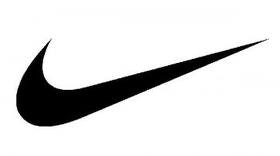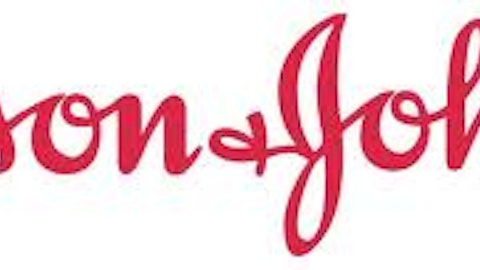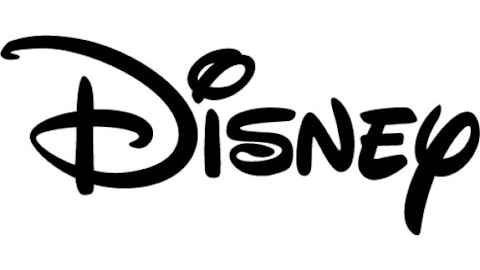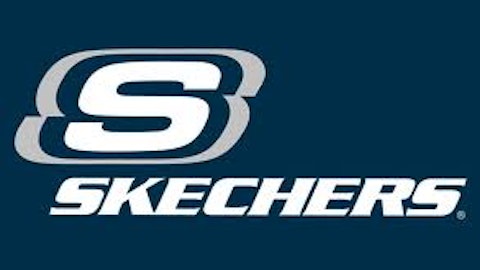
NIKE, Inc. (NYSE:NKE)’s competency in higher-end performance footwear and apparel is unmatched in the industry. The firm’s tremendous marketing resources, coupled with endorsements from some of the most widely recognized athletes on the planet, help to add instant credibility to Nike’s new product innovations.
Nike posts solid finish to fiscal 2013
NIKE, Inc. (NYSE:NKE)’s May-ending fourth quarter showed solid progress, as brand strength continued in the Americas despite a tough comparison. Gross margins continued to leverage as ongoing price increases are now holding against falling input costs, which had been rising for several years.
In the quarter, revenue grew 7%, or 8% excluding currency headwinds. Future orders were also up 8%, all inline with the high single-digit long-term growth rate targeted by the company and my own cash flow model. Nike brand strength continued in the Americas, with revenue gaining 12% in the quarter, only slightly below the 14% posted in the full fiscal year. Despite weak economic conditions in Europe, revenue fell only 1% in the quarter, but was actually up 5% currency neutral for the fiscal year. NIKE, Inc. (NYSE:NKE)footwear sales were up 8% currency neutral, while apparel and footwear saw double-digit declines.
Income and earnings growth for the quarter came in at more than triple the revenue growth rate, as gross margins gained 110 basis points to 43.9%, selling, general, and administrative expenses as a percentage of revenue fell 20 basis points to 30.2%, and the tax rate declined 110 basis points to just 22.8% partly because of some foreign tax reserve reversals.
Nike’s challenging Adidas in soccer apparel
NIKE, Inc. (NYSE:NKE)’s sale of Umbro now firmly places the flagship swoosh brand on a equal footing with rival adidas AG (ADR) (NASDAQOTH:ADDYY) in football (soccer), particularly after taking over sponsorship of key teams such as England. With the addition of the French and Brazilian national soccer team, the company will continue challenging Adidas in global soccer apparel and footwear sales.
Sales in the quarter declined 2% to EUR 3.7 billion, but were flat on a currency-neutral basis. Offsetting the sales decline was a better-than-expected 240-basis-point improvement in gross margin to 50.1%, only the second quarter in adidas AG (ADR) (OTCMKTS:ADDYY)’ history that gross margins reached over 50%. Sourcing and input costs declines continue to be a tailwind, while strategic price increases and retail mix growth also continue to drive gross margins.
Although sport is a long-term growth industry globally, as leisure time increases, there can be no assurance that leisure will follow similar patterns around the world, as economies mature. Fashion risk is also less present in sporting goods than in other apparel and footwear business; however, Adidas, Reebok, and the industry in general, have become more and more fashion driven over the last few decades. As adidas AG (ADR) (OTCMKTS:ADDYY) grows fashion and apparel businesses, results may become more volatile and harder to manage.
Vf Corp (NYSE:VFC)’s aggressive brand-acquiring strategy
Another emerging competitor Nike is facing is VF Corp (NYSE:VFC) . Faced with limited growth prospects in the U.S. 10 years ago, VF Corp (NYSE:VFC). began acquiring brands, and has effectively transformed from a mature jeans, lingerie, and uniform manufacturer into a global provider of active apparel brands.
The firm developed a solid track record, and added nearly $5 billion in revenue to its lifestyle collection over the years through acquisitions of brands like Nautica, The North Face, Vans, and Seven For All Mankind.
In the first quarter, VF Corp (NYSE:VFC)’s revenue rose 2% $2.6 billion compared with the same period of 2012, driven by strength in the outdoor and action-sports segment. Gross margins expanded by 240 basis points year-over-year, to an all-time high 48.1% in the quarter, thanks to lower product costs compared to a year ago and a more favorable mix shift to higher-margin products. Adjusted operating margins expanded by 130 basis points year-over-year to 13.8%. Adjusted first-quarter EPS came in at $2.43, exceeding my own internal and consensus estimates, and up 26% year-over-year.
But growth by acquisition is a risky strategy for any company. VF risks overestimating the value of a business, accounting inconsistencies, integration problems, and any other issue that pulls management’s attention away from its core operations. Each of VF’s product categories is highly competitive, with several mass, specialty, and web-based retailers pursuing market share gains.
Bottom line
Nike’s bullish supportive points:
As one of the world’s most widely recognized brands, Nike wields significant pricing power. The company gets higher gross margins in footwear than competitors.
Nike’s footwear and apparel assortment spans several geographies and categories, mitigating exposure to any particular product or market.
Nike has significant power over its retail customers. Nike represents more than half of the purchases by Foot Locker and Finish Line, collectively, and 13% of purchases by Dick’s Sporting Goods.
Despite its growth aspirations, it is also encouraging that Nike remains committed to returning cash to shareholders, including $5 billion in planned share repurchases during the next five years and continued dividend growth.
Emerging markets should present ample growth opportunities. The firm has established a solid foundation in key markets across Eastern Europe, the Middle East, Africa, China, and Latin America.
Conclusion
Even the best-run footwear and apparel companies are susceptible to industry dynamics, however, including slowing consumer spending and volatile fashion preferences. From time to time, these pressures can create temporary situations of excess inventory, which can lead to markdown pressure. These risks are largely unavoidable, and NIKE, Inc. (NYSE:NKE) has demonstrated that its diverse product portfolio and global reach provide an effective mitigating buffer. Given the firm’s significant product development, marketing, and supply-chain capabilities, I expect meaningful growth from a number of its more nascent brands in the coming years.
The article Nike Remains a Solid Way to Play Emerging Markets originally appeared on Fool.com and is written by Ahsan Aslam Khan.
Ahsan Aslam Khan has no position in any stocks mentioned. The Motley Fool recommends Nike. The Motley Fool owns shares of NIKE, Inc. (NYSE:NKE). Ahsan is a member of The Motley Fool Blog Network — entries represent the personal opinion of the blogger and are not formally edited.
Copyright © 1995 – 2013 The Motley Fool, LLC. All rights reserved. The Motley Fool has a disclosure policy.



